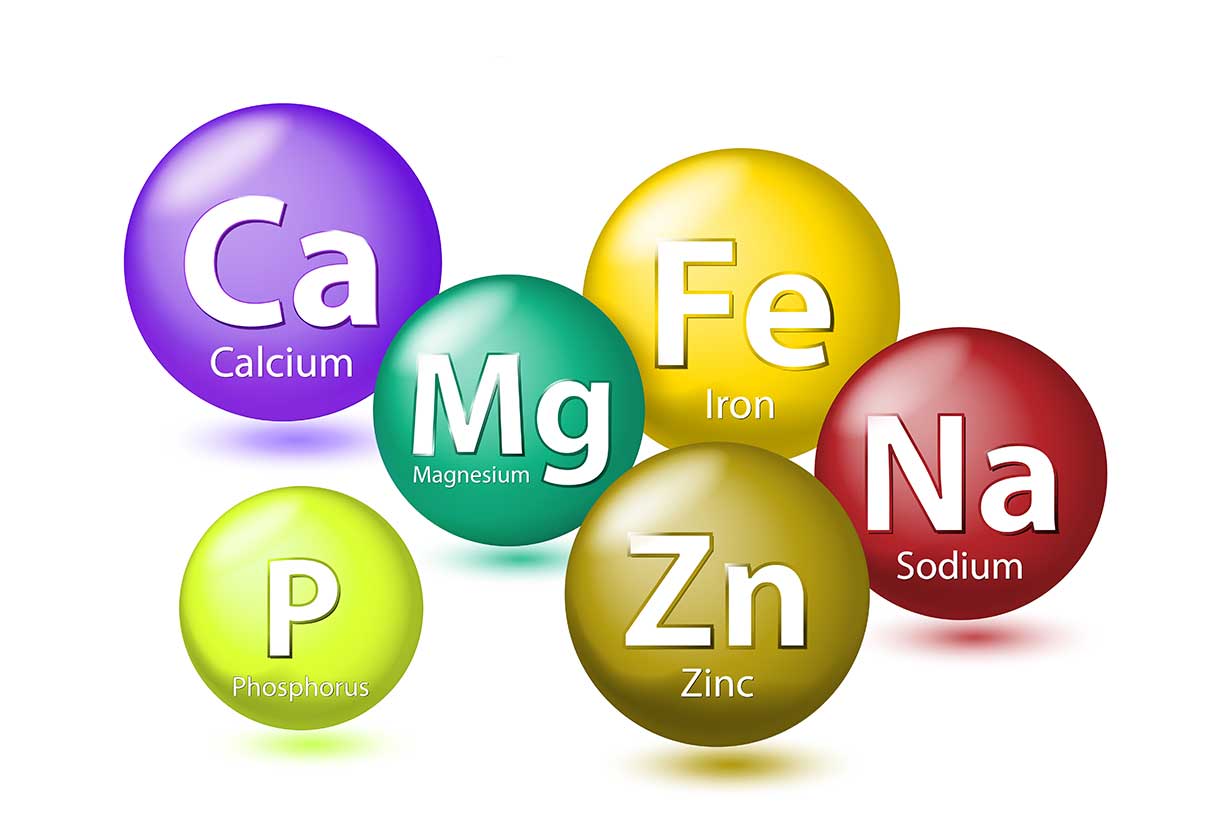Magnesium is an essential mineral that has a broad range of functions within the human body.
This article will explore the functions of magnesium, dietary magnesium requirements, and the potential benefits and downsides it can have.
What Is Magnesium?

As one of the essential minerals, magnesium is a vital mineral for human health.
Among the various minerals within the human body, magnesium is the fourth most abundant after calcium, phosphorus, and potassium (1).
Magnesium has the chemical symbol of ‘Mg’ and it has numerous roles in the body. Among these, the mineral plays an important role in energy production and it is critical for the proper functioning of hundreds of different enzymes (2, 3).
These magnesium-dependent enzymes have roles in everything from regulating blood pressure to maintaining bone and muscle (4).
Humans require more than 100 mg of magnesium per day. For this reason, magnesium can be referred to as a ‘macromineral’ (5).
However, a segment of the population does not consume enough magnesium, and the mineral has been identified as an under-consumed nutrient (6, 7, 8).
Despite a significant number of people not getting enough dietary magnesium, magnesium deficiency is relatively rare. This is because the kidneys limit the amount of magnesium that can be excreted (9).
How Much Magnesium Do We Need Per Day?
The precise amount of magnesium that we need each day depends on our age, sex, and personal circumstances.
Based on data from the Food and Nutrition Board at the Institute of Medicine, the recommended daily allowance (RDA) for magnesium is as shown in the following table, stratified by age and sex (10):
| Age | Male | Female | Pregnant | Lactating |
|---|---|---|---|---|
| <6 months | 30 mg | 30 mg | ||
| 7-12 months | 75 mg | 75 mg | ||
| 1-3 years | 80 mg | 80 mg | ||
| 4-8 years | 130 mg | 130 mg | ||
| 9-13 years | 240 mg | 240 mg | ||
| 14-18 years | 410 mg | 360 mg | 400 mg | 360 mg |
| 19-30 years | 400 mg | 310 mg | 350 mg | 310 mg |
| 31-50 years | 420 mg | 320 mg | 360 mg | 320 mg |
| >51 years | 420 mg | 320 mg |
What Benefits Can Magnesium Have?
Consuming the recommended level of magnesium, or correcting magnesium insufficiency, may have several benefits for human health.
1) Blood Pressure Regulation
According to the FDA, diets that provide adequate magnesium levels may lower the risk of high blood pressure. However, the FDA also states that the evidence is inconsistent and inconclusive (11).
Among the evidence for sufficient magnesium levels having a positive influence on blood pressure is a 2016 systematic review and meta-analysis of randomized controlled trials. This review analyzed the effects of magnesium supplementation on blood pressure and found that (12):
- A median magnesium supplementary dose of 368 mg/day for a median duration of three months lowered systolic blood pressure by 2.00 mm Hg and diastolic blood pressure by 1.78 mm Hg.
- The results suggest a causal effect of magnesium supplementation on lowering blood pressure. However, further research is necessary to confirm the potential blood-pressure-lowering efficacy of magnesium.
2) May Have Benefits For the Heart
A 2013 systematic review and meta-analysis of sixteen observational studies looked at magnesium intake and the risk of cardiovascular disease.
This study demonstrated that higher circulating magnesium levels were associated with a 30% reduced cardiovascular disease risk. Additionally, higher dietary magnesium intake was associated with a 22% lower risk of ischemic heart disease (13).
Furthermore, a large 2018 Mendelian randomization study found a 12% lower risk of coronary artery disease per 0.1 mmol/L increase in predicted serum magnesium level (14).
However, these findings do not appear to be consistent across all studies.
For instance, a 2021 systematic review and meta-analysis of cohort studies found no significant association between total magnesium intake and cardiovascular disease mortality (15).
3) Magnesium May Improve Sleep Quality
In recent years, several large reviews have investigated the impact of magnesium on sleep quality:
- A 2022 systematic review of the available literature looked at magnesium’s role in sleep health. Overall, the study found an association between magnesium status and sleep quality in observational studies. However, results from randomized clinical trials were uncertain. The researchers deemed that larger and longer-duration clinical trials are necessary to remove this uncertainty (16).
- Another 2022 systematic review and meta-analysis analyzed the type of supplements that may improve sleep quality. The researchers determined that further research is necessary before making a judgment on the efficacy of magnesium (17).
What Potential Downsides Can Excessive Magnesium Intake Have?
In the same way that an insufficient intake of magnesium can worsen health outcomes, excessive magnesium intake can potentially cause issues.
Tolerable Upper Intake Level
First of all, a tolerable upper intake level has been set for magnesium by the Food and Nutrition Board (FNB) at the Institute of Medicine (18).
Tolerable upper intake levels refer to the dose below which adverse health effects are unlikely.
Additionally, it is important to note that these tolerable upper intake level figures relate only to supplementary magnesium or magnesium-containing medications.
The reason for this is that the kidney quickly excretes excess dietary magnesium into the urine, making it hard for magnesium to build up from regular dietary intake. Furthermore, no adverse effects have been reported from natural dietary magnesium intake (18).
However, the FNB state that large supplementary doses are not absorbed as effectively as dietary sources are. Further, adverse (and sometimes serious) reactions to supplementary magnesium are possible, especially with the presence of impaired kidney function (19).
Here are the tolerable upper intake levels set by the FNB (18):
| Age | Male | Female |
|---|---|---|
| <12 months | – | – |
| 1-3 years | 65 mg | 65 mg |
| 4-8 years | 110 mg | 110 mg |
| 9-18 years | 350 mg | 350 mg |
| >19 years | 350 mg | 350 mg |
As shown in the table, there are no sex-based differences in the tolerable upper intake levels.
Additionally, the tolerable upper intake levels are the same for all females, regardless of pregnancy or breastfeeding.
What Symptoms Can Excessive Supplementary Magnesium Intake Cause?
The main side effects of excessive magnesium are diarrhea and abdominal cramping (20, 21, 22, 23).
On rare occasions, severe adverse events have been seen from extreme hypermagnesemia (excess magnesium levels in the blood).
These events have included coma and death, caused by over-dosing on supplementary or medical sources of magnesium (24, 25, 26, 27).
Magnesium Can Interact With Various Medications
High supplementary doses of magnesium can interact with various medications. These interactions may include magnesium potentially lowering the absorption and weakening the effect of medications (28, 29, 30).
Therefore, it is important for individuals taking prescription or non-prescription drugs to talk to their doctor before commencing magnesium supplementation.
What Foods Contain the Most Magnesium?
There are numerous rich food sources of magnesium, and these include:
- Cocoa products
- Leafy greens
- Seeds
- Whole grains
- Certain types of nuts
- Legumes
- Seafood (especially conch)
For a full guide to the best magnesium sources, see this guide to foods high in magnesium.








